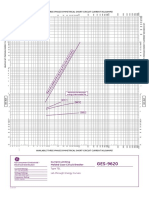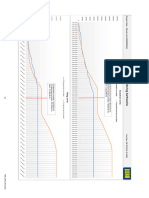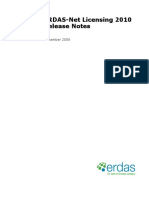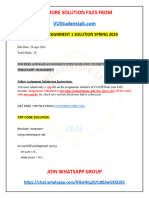TCC Number 173 4 2
TCC Number 173 4 2
Uploaded by
Dennis RimandoCopyright:
Available Formats
TCC Number 173 4 2
TCC Number 173 4 2
Uploaded by
Dennis RimandoOriginal Title
Copyright
Available Formats
Share this document
Did you find this document useful?
Is this content inappropriate?
Copyright:
Available Formats
TCC Number 173 4 2
TCC Number 173 4 2
Uploaded by
Dennis RimandoCopyright:
Available Formats
CURRENT IN AMPERES
100000
10000
20000
30000
40000
50000
60000
70000
80000
90000
1000
2000
3000
4000
5000
6000
7000
8000
9000
100
200
300
400
500
600
700
800
900
5 6 7 8 9 10 20 30 40 50 60 70 80 90
1000 1000
900 900
800 800
700 700
600 600
500 500
400 400
300 300
200 200
100 100
90 90
80 80
70 70
60 60
50 50
40 40
30 30
20 20
410 420
10 10
9 9
8 8
7 7
6 6
5 5
TIME IN SECONDS
TIME IN SECONDS
4 4
3 3
2 2
1 1
.9 .9
.8 .8
.7 .7
.6 .6
.5 .5
.4 .4
.3 .3
.2 .2
.1 .1
.09 .09
.08 .08
.07 .07
.06 .06
.05 .05
.04 .04
.03 .03
.02 .02
.01 .01
5 6 7 8 9 10 20 30 40 50 60 70 80 90
100
200
300
400
500
600
700
800
900
1000
2000
3000
4000
5000
6000
7000
8000
9000
10000
20000
30000
40000
50000
60000
70000
80000
90000
100000
CURRENT IN AMPERES
TOTAL CLEARING TIME-CURRENT CHARACTERISTIC CURVES
SM REFILL UNITS—S&C COORDINATING SPEED
BASIS—These refill units are tested in accordance with the proce- COORDINATION—These curves represent the total time required for This narrow time band normally will provide the desired coordi-
dures described in ANSI Standard C37.41-1981. As required by this a refill unit to melt and interrupt a fault current, and should be fol- nation. If the selected S&C Coordinating Speed refill unit does not
standard, the minimum melting and total clearing curves are based lowed in coordination problems where fuses are applied as “pro- meet the coordination requirements, check to see if a refill unit in the
on tests starting with the refill unit at an ambient temperature of tecting” devices. S&C Slow Speed or S&C Standard Speed will satisfy.
25°C and no initial load.
Any preloading reduces melting time. With respect to the “pro- Sometimes a selected ampere rating will fail to meet the coordi-
CONSTRUCTION—Fusible elements are silver and of solderless tected” fuse, the effect of preloading must be determined and adjust- nation requirements in any available speed. In this case the selec-
construction. ments made to its minimum melting curve: tion of another ampere rating for either the protecting or protected
1. When close coordination is required; fuse usually will satisfy all requirements.
TOLERANCES—Curves are plotted to maximum test points. All varia- 2. When, regardless of the preciseness of coordination, the pro-
tions are minus. tected fuse is subjected to temporary overloads. Do not assume that other fuses that do not employ S&C’s silver,
helically coiled fusible element construction can better resolve a
APPLICATION—These S&C Coordinating Speed refill units should There are cases where the coordination requirements may be coordination impasse than the use of another ampere rating in one of
be applied only where the maximum continuous load current does very exacting; for example, in coordinating a transformer-primary the S&C speed options. Such other fuses, including “time-lag”
not exceed 400 amperes and where all fault currents below 3000 fuse with a secondary breaker and a source-side breaker. The time speeds, “super-slow” speeds, and “high-surge” speeds, require the
amperes for refill units rated 410 amperes, and 4000 amperes for interval between the operating characteristics of the two breakers use of “safety-zone” or setback allowances and, in addition, they
refill units rated 420 amperes, will be cleared by another fuse. They may be very narrow. Under these circumstances there must be an have larger construction tolerances (plus 20% in current; plus 40% in
are for use where load conditions do not require a fuse or higher extremely short time interval between the minimum melting and the terms of time). The application of these two factors will give a time
ampere rating, but where additional time margin in the “protected” total clearing characteristics of the fuse. interval between the adjusted minimum melting curve and the total
fuse is necessary for coordination with a “protecting” fuse or other The refill units represented by these curves possess this short clearing curve greater than in the case of S&C speed options.
device, or to withstand transient overcurrents associated with the time interval feature, since—having a nondamageable fusible ele-
switching and starting of electrical equipment. ment of precise construction—they require:
Since these refill units have silver element construction which is 1. As little as 10% total tolerance in melting current—compared to
REFILL UNITS AVAILABLE—
not subject to damage by aging or transient overcurrents, it is unnec- the 20% tolerance of many fuses (20% and 40% respectively in
Refill Unit Kv Nom. Ratings Ampere Ratings
terms of time).
essary to replace unblown refill units in single-phase or three-phase SM-5® . . . . . . . . . . . . . . . . 7.2 and 14.4 . . . . . . . . . . . 410 and 420
installations when one or more refill units have blown. 2. No “safety-zone” or setback allowances.
Supersedes TCC No. 173-4-2 dated 2-23-76 ©1985
TCC NUMBER 173-4-2
S&C ELECTRIC COMPANY • Chicago Page 1 of 1
S&C ELECTRIC CANADA LTD. • Toronto March 18, 1985
You might also like
- TCC Number 119 4 4Document1 pageTCC Number 119 4 4Dennis RimandoNo ratings yet
- Minimum Melting Time-Current Characteristic Curves: SMD Fuse Units-S&C Standard SpeedDocument1 pageMinimum Melting Time-Current Characteristic Curves: SMD Fuse Units-S&C Standard SpeedRafaelo09No ratings yet
- PAG-4Document1 pagePAG-4viler corcuera rodriguezNo ratings yet
- TCC Number 153 2 PDFDocument1 pageTCC Number 153 2 PDFOmar VazquezNo ratings yet
- Minimum Tripping Time-Current Characteristic Curves: S&C Electric CompanyDocument1 pageMinimum Tripping Time-Current Characteristic Curves: S&C Electric CompanyEddy UberguagaNo ratings yet
- Total Clearing Time-Current Characteristic Curves: S&C Electric CompanyDocument1 pageTotal Clearing Time-Current Characteristic Curves: S&C Electric CompanyEddy UberguagaNo ratings yet
- Minimum Tripping Time-Current Characteristic Curves: S&C Electric CompanyDocument1 pageMinimum Tripping Time-Current Characteristic Curves: S&C Electric CompanyEddy UberguagaNo ratings yet
- Situacion Actual Del Sarampion en America D Pastor Reunion INS - COLOMBIADocument22 pagesSituacion Actual Del Sarampion en America D Pastor Reunion INS - COLOMBIADiana Paola Castaño SalazarNo ratings yet
- 165 6 PDFDocument1 page165 6 PDFGonzalo Peñafiel CondoriNo ratings yet
- Total Clearing Time-Current Characteristic Curves: Fault Tamer Fuse LimitersDocument1 pageTotal Clearing Time-Current Characteristic Curves: Fault Tamer Fuse LimitersStoner WddNo ratings yet
- Total Clearing Time-Current Characteristic Curves: Smu Fuse Units For Voltage-Transformer Applications-S&C Standard SpeedDocument1 pageTotal Clearing Time-Current Characteristic Curves: Smu Fuse Units For Voltage-Transformer Applications-S&C Standard SpeedObed GarcíaNo ratings yet
- 165 6 2Document1 page165 6 2Carlos A. Carpio CárdenasNo ratings yet
- Ge Tey3100 MCB ManualDocument1 pageGe Tey3100 MCB ManualPrathap KumarNo ratings yet
- Ges 6108c Type TQD GeDocument1 pageGes 6108c Type TQD GeBolivar MartinezNo ratings yet
- Minimum Melting Time-Current Characteristic CurvesDocument1 pageMinimum Melting Time-Current Characteristic CurvesObed GarcíaNo ratings yet
- GES-6121C: Multiples of Current RatingDocument1 pageGES-6121C: Multiples of Current RatingAdolfo Sotomayor BurgosNo ratings yet
- GES-6122C: Multiples of Current RatingDocument1 pageGES-6122C: Multiples of Current RatingAdolfo Sotomayor BurgosNo ratings yet
- Multiples of Ground Fault Pickup SettingDocument1 pageMultiples of Ground Fault Pickup SettingjosehenriquezsotoNo ratings yet
- Ges 6120d Thed GeDocument1 pageGes 6120d Thed GeBolivar MartinezNo ratings yet
- Ges 6194 PDFDocument2 pagesGes 6194 PDFjurica_2006No ratings yet
- Ges 6231aDocument1 pageGes 6231aAmr AhmedNo ratings yet
- Available Three-Phase Symmetrical Short-Circuit Current (Kiloamps)Document1 pageAvailable Three-Phase Symmetrical Short-Circuit Current (Kiloamps)jurica_2006No ratings yet
- Available Three-Phase Symmetrical Short-Circuit Current (Kiloamps)Document1 pageAvailable Three-Phase Symmetrical Short-Circuit Current (Kiloamps)Amr AhmedNo ratings yet
- PAG-5Document1 pagePAG-5viler corcuera rodriguezNo ratings yet
- DES-095B: Approximately (0.784-Actual Pickup)Document1 pageDES-095B: Approximately (0.784-Actual Pickup)shrikanth5singhNo ratings yet
- Catalogo ConductosDocument8 pagesCatalogo ConductosCarlos ManriquezNo ratings yet
- Des-095b - Long TimeDocument1 pageDes-095b - Long Timeshrikanth5singhNo ratings yet
- DES-101B: Multiple of Trip Rating PlugDocument1 pageDES-101B: Multiple of Trip Rating Plugjurica_2006No ratings yet
- Situación Epidemiológica de Sarampión Rubeola y PFA Macro Oriente 14junio2021Document40 pagesSituación Epidemiológica de Sarampión Rubeola y PFA Macro Oriente 14junio2021cdc.inmunopreveniblesNo ratings yet
- Situación Epidemiológica de Sarampión Rubeola y PFA Macro Norte 17junio2021Document49 pagesSituación Epidemiológica de Sarampión Rubeola y PFA Macro Norte 17junio2021cdc.inmunopreveniblesNo ratings yet
- Wichmann 10V28 Book - Compressed (091-120)Document30 pagesWichmann 10V28 Book - Compressed (091-120)Ткаченко Павел 234No ratings yet
- Graphs-of-Cases-for - pptx25 July 2021Document8 pagesGraphs-of-Cases-for - pptx25 July 2021John Y FadrilanNo ratings yet
- TCC Number 115 4Document1 pageTCC Number 115 4Dennis RimandoNo ratings yet
- Multiples of Current Rating: Molded Case Circuit Breakers Q LineDocument1 pageMultiples of Current Rating: Molded Case Circuit Breakers Q LineMUSIC ELECNo ratings yet
- 2 CURVA CALCULO SECCIONAMIENTO COLEGIO-ModelDocument1 page2 CURVA CALCULO SECCIONAMIENTO COLEGIO-ModelBORISSNo ratings yet
- Model 9F54Dfc Series: Current in AmperesDocument1 pageModel 9F54Dfc Series: Current in AmperesPaulo H TavaresNo ratings yet
- 1 CALCULO DE FUSIBLES COLEGIO-ModelDocument1 page1 CALCULO DE FUSIBLES COLEGIO-ModelBORISSNo ratings yet
- 2017CT CompressorSpecsAtAGlanceDocument4 pages2017CT CompressorSpecsAtAGlanceMadhana GopalNo ratings yet
- DFL BrochureDocument4 pagesDFL BrochureepestudentNo ratings yet
- 2016CT Compressor Specs at GlanceDocument4 pages2016CT Compressor Specs at Glanceabsahkah100% (1)
- Roof FramingDocument1 pageRoof Framingsherlaine eugenioNo ratings yet
- Monitoring EWDocument2 pagesMonitoring EWrfq2brd2ttNo ratings yet
- ADA Index and Sample Output PDFDocument8 pagesADA Index and Sample Output PDFKavita GohelNo ratings yet
- Denah TPS-ModelDocument1 pageDenah TPS-ModelRezaandikapNo ratings yet
- DAN FAMINI-PLAN - PDF 2Document1 pageDAN FAMINI-PLAN - PDF 2ADONIS PLATINONo ratings yet
- Barrel Vault Final DrawingsDocument4 pagesBarrel Vault Final DrawingsLisha AgrawalNo ratings yet
- Dekalb Covid-19 Epidemiology Report: Daily and Cumulative Covid-19 Case Counts, Dekalb CountyDocument13 pagesDekalb Covid-19 Epidemiology Report: Daily and Cumulative Covid-19 Case Counts, Dekalb CountyZachary HansenNo ratings yet
- Kerja-Kerja Menaiktaraf Sistem Takungan Air Mentah Di Mukasauk Loji Rawatan Air (Lra) Kina Benuwa, Wilayah Persekutuan LabuanDocument1 pageKerja-Kerja Menaiktaraf Sistem Takungan Air Mentah Di Mukasauk Loji Rawatan Air (Lra) Kina Benuwa, Wilayah Persekutuan LabuanFarith AkbarNo ratings yet
- ARCHI PLAN - 1 Autosaved-P1 - Plumbing PlanDocument1 pageARCHI PLAN - 1 Autosaved-P1 - Plumbing PlanjohnryanarrojadoNo ratings yet
- Cumulative CostDocument1 pageCumulative CostadlenaNo ratings yet
- Asignación de Persinal Y Curva "S"Document2 pagesAsignación de Persinal Y Curva "S"RoberChavarríaCastañedaNo ratings yet
- OSHYIYEDocument1 pageOSHYIYENana BarimaNo ratings yet
- Nifty Technical AnalysisDocument136 pagesNifty Technical Analysisapi-3728932No ratings yet
- 4. Commodities- Histogram- R1Document5 pages4. Commodities- Histogram- R1Moh H ElkomyNo ratings yet
- 主機維修保養手冊Document1 page主機維修保養手冊a1021332124No ratings yet
- Technical Analysis - Charts, Trends & Patterns: Presented by Jayanthi Premkumar 0991014Document26 pagesTechnical Analysis - Charts, Trends & Patterns: Presented by Jayanthi Premkumar 0991014ruckumaaluNo ratings yet
- Power Point UASDocument1 pagePower Point UASNurul KhatimahNo ratings yet
- Pag Ibig Housing Loan Form Co-Borrower - HLF069 - HousingLoanApplicationCoBorrower - V07Document2 pagesPag Ibig Housing Loan Form Co-Borrower - HLF069 - HousingLoanApplicationCoBorrower - V07Dennis RimandoNo ratings yet
- HR102 10PulserPlusNetDocument2 pagesHR102 10PulserPlusNetDennis RimandoNo ratings yet
- TCC Number 115 4Document1 pageTCC Number 115 4Dennis RimandoNo ratings yet
- TESDA Competency Std. CS - Pure Battery Propelled Electric Vehicle Servicing Level II - Cherry ToraldeDocument97 pagesTESDA Competency Std. CS - Pure Battery Propelled Electric Vehicle Servicing Level II - Cherry ToraldeDennis RimandoNo ratings yet
- VJ221291210750 SSS Contribution Payment Oct To Dec 2022 SaudiaDocument1 pageVJ221291210750 SSS Contribution Payment Oct To Dec 2022 SaudiaDennis RimandoNo ratings yet
- Philhealth Advisory No. 2022 0010Document1 pagePhilhealth Advisory No. 2022 0010Dennis RimandoNo ratings yet
- Guidelines On 3-StrikeDocument4 pagesGuidelines On 3-StrikeDennis RimandoNo ratings yet
- Retro Electrical Enterprises 500kw, 380v - Morong, Bataan 04.12.2019Document2 pagesRetro Electrical Enterprises 500kw, 380v - Morong, Bataan 04.12.2019Dennis RimandoNo ratings yet
- TRM 104Document2 pagesTRM 104Dennis RimandoNo ratings yet
- CableDocument14 pagesCablefarrelsyafiraNo ratings yet
- Tlc3-Fcr-T Intelligent Fan Coil Controller: FeaturesDocument10 pagesTlc3-Fcr-T Intelligent Fan Coil Controller: FeatureschinitnNo ratings yet
- RN ERDAS-Net Licensing 2010Document12 pagesRN ERDAS-Net Licensing 2010CRISTIAN BENAVENTE BRISTOLNo ratings yet
- Tutoriale e BlotterDocument42 pagesTutoriale e BlotterMyk Twentytwenty NBeyond100% (1)
- Honey PotDocument24 pagesHoney PotMajid ShahgholiNo ratings yet
- DME - II Solutions I Mid Term Test 2020-21Document21 pagesDME - II Solutions I Mid Term Test 2020-21djadja nakamayaNo ratings yet
- Pressure Booster - V GuardDocument2 pagesPressure Booster - V Guardhalderchayan320No ratings yet
- Manual Soft Starter PSD370 5309699-1Document22 pagesManual Soft Starter PSD370 5309699-1Marcos AldrovandiNo ratings yet
- Astm A226 PDFDocument2 pagesAstm A226 PDFgaminNo ratings yet
- Data Sheet - Orqubit Business Intelligence For Tally - ERP9 and Other ApplicationsDocument4 pagesData Sheet - Orqubit Business Intelligence For Tally - ERP9 and Other ApplicationsorqubitbiNo ratings yet
- Avoid Truncating W DAY DDocument7 pagesAvoid Truncating W DAY DAnonymous FtmFHWBCs5No ratings yet
- Ujian Praktik ReadingDocument2 pagesUjian Praktik ReadingNega KerenNo ratings yet
- Instantaneous Values - UMD03293 - 04-Sep-2021 06-32-15-000 PMDocument3 pagesInstantaneous Values - UMD03293 - 04-Sep-2021 06-32-15-000 PMAnuj KumarNo ratings yet
- Everlast Is Launching New Models of TIG Welding MachinesDocument3 pagesEverlast Is Launching New Models of TIG Welding MachinesPR.comNo ratings yet
- Ier 512C User ManualDocument32 pagesIer 512C User ManualAtco DiasNo ratings yet
- KP Mam SsDocument12 pagesKP Mam Ssmarketing hydroNo ratings yet
- A-A-59125 RevBDocument4 pagesA-A-59125 RevBMAI_QualityNo ratings yet
- Genie Operator's ManualDocument30 pagesGenie Operator's Manualogunfuwa OluseyiNo ratings yet
- Design and Research of Circular Diaphragm Wall For Deep Excavation of Shanghai TowerDocument13 pagesDesign and Research of Circular Diaphragm Wall For Deep Excavation of Shanghai TowerAndrés VelozaNo ratings yet
- Organic - Reactions Practice Exercise 5 PDFDocument8 pagesOrganic - Reactions Practice Exercise 5 PDFgeronimo antNo ratings yet
- 04 Jamis CatalogDocument46 pages04 Jamis CatalogBryan YoungNo ratings yet
- Android TV Media Player User ManualDocument17 pagesAndroid TV Media Player User ManualAneez Ahmed NNo ratings yet
- ASTM Permeability Falling Head LabDocument5 pagesASTM Permeability Falling Head LabMelissa Sammy100% (1)
- 20mm Sieve AnalysisDocument7 pages20mm Sieve AnalysisRahul RanjanNo ratings yet
- CS201P Assignment 1 Solution Spring 2024Document4 pagesCS201P Assignment 1 Solution Spring 2024dropd2755No ratings yet
- PVCMC 0501 Us PDFDocument40 pagesPVCMC 0501 Us PDFAshok SureshNo ratings yet
- Escort TugsDocument10 pagesEscort TugsDnv BaileyNo ratings yet
- ATS - Dicky Prasetyo CVDocument4 pagesATS - Dicky Prasetyo CVdick prasetyoNo ratings yet
- Secure Data Deletion - Joel ReardonDocument208 pagesSecure Data Deletion - Joel ReardonΧάρης Β.No ratings yet
- Add New Parameters and Enhance Source Code of Standard Function ModuleDocument9 pagesAdd New Parameters and Enhance Source Code of Standard Function ModuleEmilSNo ratings yet






























































































